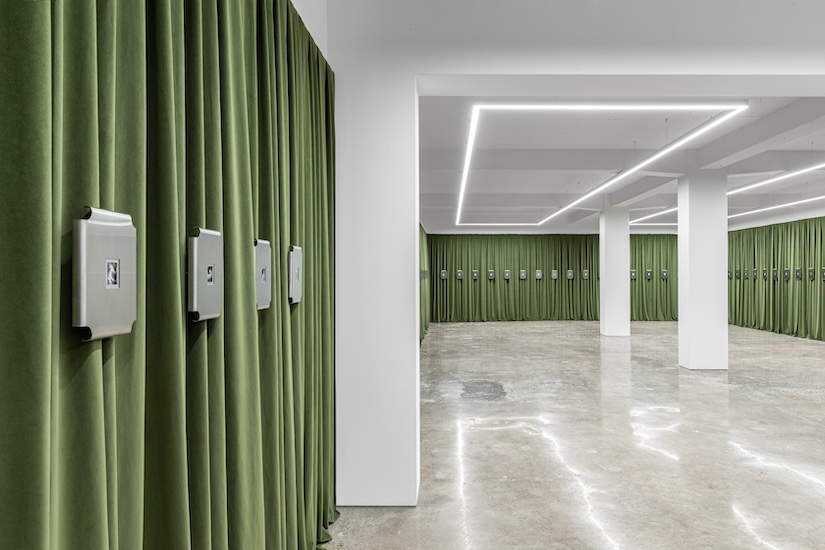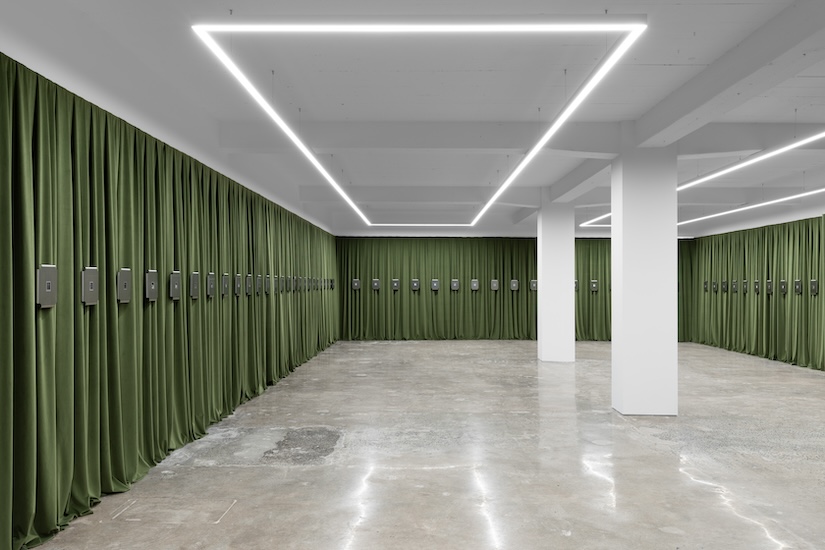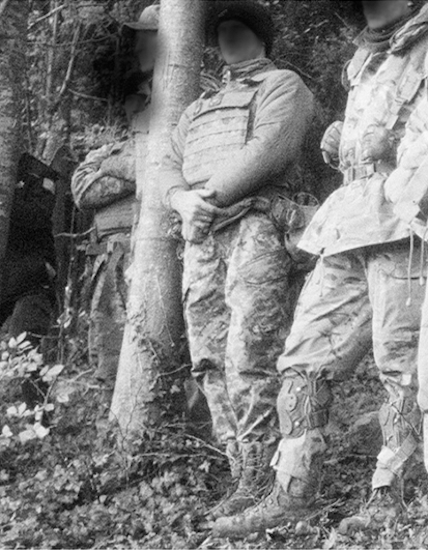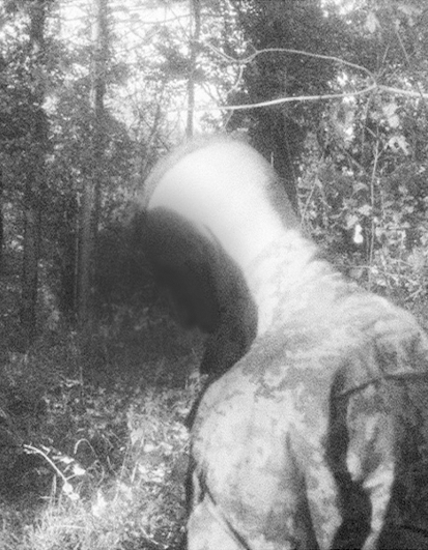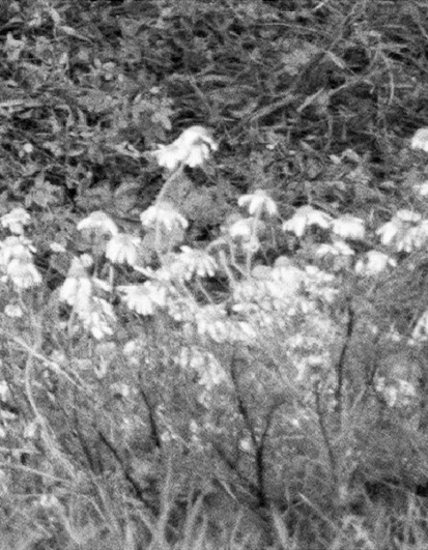Ames Yavuz presents Each Apparition, Searches for an Eye, featuring a new body of work by Stanislava Pinchuk.
Each Apparition, Searches for an Eye is a series of 100 photo-portraits of soldiers from Pinchuk’s deployment to witness combat training for the Armed Forces of Ukraine as the Official War Artist of Australia in 2023. Instructed to obscure all identifying features to elude enemy facial-recognition software, the artist manually manipulated the film negatives to blur the faces of her subjects. The works are presented as passport photo-size images framed within steel plates, gesturing towards the critical shift of what a ‘war portrait’ may mean in the 21st Century.
Acts of facial erasure, paradoxically, allow Pinchuk’s photo-portraits to enter into a public record. In the iconoclastic process of blurring, the artist speaks of committing each face to her own memory. This, she calls the double bind of the photograph, “the flux and re-flux of the image; for the private to become public, to become a part of a record for the moment, it has to become destroyed in part.”
The partly-erased photo-portraits recall 19th Century ‘spirit photography’, in which daguerreotypists experimented with emergent long-exposure technology in an effort to capture ‘ghosts’ onto silver plates. Around the same time, the daguerreotype’s unprecedented visual fidelity also produced the first photo-portraits of soldiers, as well as the first photograph of an active battlefield—a road littered with cannon-balls in Sevastopol, Ukraine taken during The Crimean War in 1855.
The exhibition examines how the fundamental processes of photography have remained in place since its invention, with its components simply re-arranged. The artist lists, “the unseen eye behind a lens, the information veiled behind a curtain, the hardware plate, the migration of the captured image, be it through a portable frame or a fibre-optic cable, and the process of sensitisation, by which the more exposure time to a subject’s face still means a greater clarity.”
At the same time, the technological infrastructure around image-making and consumption has vastly transformed. The facial-recognition technology that necessitated the artist to blur identifying features of her subjects today is also being used to identify previously unnamed sitters of 19th Century soldier portraits, matching facial structures against wider data-sets of historical photographs and archives.
In Each Apparition, Searches for an Eye, Pinchuk proposes that we understand our relationship with technology by becoming “ghosts for the machine”. Rather than work in Alan Turing’s famous ‘ghost in the machine’ paradigm of machine sentience, Pinchuk’s photo-portraits, which bear no resemblance to their subjects yet retain their subjective presence, suggest a more nimble stance. One perhaps already embodied by figures such the ‘Ghost of Kyiv’, the nickname given to a MiG-29 Fulcrum flying ace rumoured to have shot down six Russian planes over Kyiv in 2022. This is an elusive apparition for another ghost; one which first searches for an eye to be seen, an eye to be localised, classified, mapped to a wider face, and verified.

